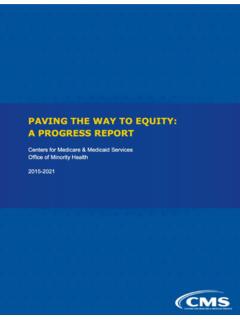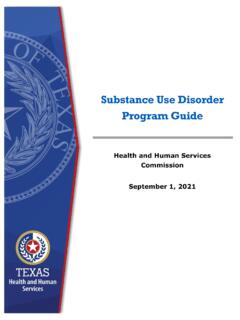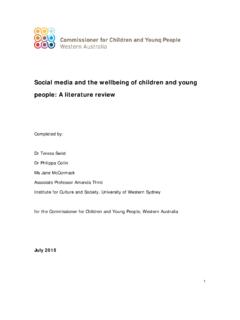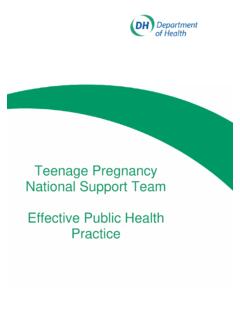Transcription of NATIONAL PRIMARY HEALTH CARE STRATEGIC …
1 NATIONAL PRIMARY HEALTH care STRATEGIC FRAMEWORKAPRIL 2013 NATIONAL PRIMARY HEALTH care STRATEGIC FrameworkISBN: 978-1-74241-973-2 Online ISBN: 978-1-74241-974-9 Publications approval number: 10250 Copyright Statements:Paper-based publications Commonwealth of Australia 2013 This work is copyright. You may reproduce the whole or part of this work in unaltered form for your own personal use or, if you are part of an organisation, for internal use within your organisation, but only if you or your organisation do not use the reproduction for any commercial purpose and retain this copyright notice and all disclaimer notices as part of that reproduction. Apart from rights to use as permitted by the Copyright Act 1968 or allowed by this copyright notice, all other rights are reserved and you are not allowed to reproduce the whole or any part of this work in any way (electronic or otherwise) without first being given the specific written permission from the Commonwealth to do so.
2 Requests and inquiries concerning reproduction and rights are to be sent to the Online, Services and External Relations Branch, Department of HEALTH and Ageing, GPO Box 9848, Canberra ACT 2601, or via e-mail to Internet sites Commonwealth of Australia 2013 This work is copyright. You may download, display, print and reproduce the whole or part of this work in unaltered form for your own personal use or, if you are part of an organisation, for internal use within your organisation, but only if you or your organisation do not use the reproduction for any commercial purpose and retain this copyright notice and all disclaimer notices as part of that reproduction. Apart from rights to use as permitted by the Copyright Act 1968 or allowed by this copyright notice, all other rights are reserved and you are not allowed to reproduce the whole or any part of this work in any way (electronic or otherwise) without first being given the specific written permission from the Commonwealth to do so.
3 Requests and inquiries concerning reproduction and rights are to be sent to the Online, Services and External Relations Branch, Department of HEALTH and Ageing, GPO Box 9848, Canberra ACT 2601, or via e-mail to NATIONAL PRIMARY HEALTH care STRATEGIC FRAMEWORKAPRIL 2013ivThe NATIONAL PRIMARY HEALTH care STRATEGIC Framework is a nationally agreed policy document developed by the Commonwealth, State and Territory HEALTH Departments. The Framework was approved by HEALTH Ministers, through the Standing Council on HEALTH , in April Hon Tanya Plibersek MPMinister for HEALTH and Minister for Medical Research Australian GovernmentThe Hon Robyn Jane Lambley MLAM inister for HEALTH Northern TerritoryThe Hon Michelle O Byrne MPMinister for HEALTH TasmaniaThe Hon Jillian Skinner MPMinister for HEALTH New South WalesThe Hon Jack Snelling MPMinister for HEALTH and Ageing South AustraliaThe Hon David Davis MLCM inister for HEALTH VictoriaThe Hon Katy Gallagher MLAC hief Minister and Minister for HEALTH Australian Capital TerritoryThe Hon Dr Kim Desmond Hames MLAM inister for HEALTH Western AustraliaThe Hon Lawrence Springborg MPMinister for HEALTH QueenslandNational PRIMARY HEALTH care STRATEGIC FrameworkvFOREWORDThe NATIONAL PRIMARY HEALTH care STRATEGIC Framework is the first NATIONAL statement.
4 Endorsed by the Standing Council on HEALTH , which presents an agreed approach for creating a stronger, more robust PRIMARY HEALTH care system in Australia. Evidence demonstrates that those HEALTH systems with strong PRIMARY HEALTH care are more efficient, have lower rates of hospitalisation, fewer HEALTH inequalities and better HEALTH outcomes including lower mortality. While Australians generally enjoy some of the best HEALTH outcomes in the world, it is widely recognised the current HEALTH system is under increasing strain from the growing burden of chronic illness and an ageing population. This Framework builds on major HEALTH reforms already underway and will contribute towards our goal of achieving a safe, equitable, effective and sustainable HEALTH system. Our vision for PRIMARY HEALTH care in Australia is clear. We aim to: improve HEALTH care for all Australians, particularly those who currently experience inequitable HEALTH outcomes; keep people healthy; prevent illness; reduce the need for unnecessary hospital presentations; and improve the management of complex and chronic conditions.
5 The Framework focuses on four STRATEGIC outcomes: building a consumer focused and integrated PRIMARY HEALTH care system; improving access and reducing inequity; increasing the focus on HEALTH promotion and prevention, screening and early intervention; and improving quality, safety, performance and Commonwealth in partnership with each state and territory will develop state-specific bilateral plans to implement the Framework. These plans will specify the actions to be undertaken to address the issues of most importance within each jurisdiction and where collaborative action can make the greatest HEALTH care providers are critical to leading new approaches in how we deliver HEALTH care in our communities, such as patient-centred care , interdisciplinary approaches, and the optimal use of information and communication also have an essential role. We need to support individuals and families to make informed choices about their HEALTH care needs and to be actively engaged as partners with their HEALTH care team.
6 This Framework is an important step in an ongoing process of improvement, reform and cultural change in our HEALTH system. It will help ensure that our PRIMARY HEALTH care system not only meets the challenges of today, but that it s ready for the needs of the future. The Hon Tanya Plibersek MPMinister for HEALTH and Minister for Medical Research Australian GovernmentviNational PRIMARY HEALTH care STRATEGIC FrameworkviiTABLE OF CONTENTSP urpose, Scope and Context of the Framework _____1 Purpose of the Framework _____1 Scope of the Framework _____1 NATIONAL HEALTH care Reform Where does the Framework fit? _____2 Responsibilities in PRIMARY HEALTH care _____3 Medicare Locals PRIMARY HEALTH care organisations _____4 Implementing the Framework _____5 PRIMARY HEALTH care in Australia _____6 From the Consumer Perspective _____7 Systemic NATIONAL Challenges in HEALTH care _____8 The Case for Change _____8 NATIONAL Vision for PRIMARY HEALTH care _____11 Priorities and Objectives _____11 STRATEGIC Outcome 1 Build a consumer-focused integrated PRIMARY HEALTH care system _____12 STRATEGIC Outcome 2 Improve access and reduce inequity _____17 STRATEGIC Outcome 3 Take action to tackle the social determinants of HEALTH and wellbeing with emphasis on HEALTH promotion, prevention, screening and early intervention _____20 STRATEGIC Outcome 4 Improve quality, safety.
7 Performance and accountability _____22 Attachment A _____24 Extracts from the NATIONAL HEALTH Reform Agreement _____24viiiNational PRIMARY HEALTH care STRATEGIC Framework1 Purpose, Scope and Context of the FrameworkPurpose of the FrameworkThe NATIONAL PRIMARY HEALTH care STRATEGIC Framework (the Framework) promotes a new approach for the Commonwealth, states and territories to work in partnership to better integrate HEALTH care across care settings and to improve HEALTH outcomes for all the first time, it provides a mechanism for coordinated action at the Commonwealth, state and local levels to enable a more harmonised approach in PRIMARY HEALTH care planning and service delivery. The Framework specifically builds on the NATIONAL PRIMARY HEALTH care Strategy, which was released in May 2010 following a comprehensive NATIONAL consultation process. This Strategy and its suite of supporting papers (available at ) discusses in more detail many of the issues raised within this document.
8 The aim of the Framework is not to duplicate the work of the Strategy, but to bring into focus key priority areas identified in the Strategy as NATIONAL challenges most in need of action that we can address over the upcoming years. Scope of the FrameworkThe NATIONAL PRIMARY HEALTH care STRATEGIC Framework takes a broad and comprehensive view of PRIMARY HEALTH care . The Framework recognises the central role of General Practitioners (GPs) and evolving models of general practice in the PRIMARY HEALTH care system of the future. It also recognises that the concept of PRIMARY HEALTH care is wide and extends beyond the traditional general practice focus of care . Recognising that GPs will continue to build on their pivotal role in PRIMARY HEALTH care , the Framework acknowledges there is also a whole suite of other skilled HEALTH care professionals and organisations providing PRIMARY HEALTH care services to the Australian community.
9 The Framework also recognises the role of the consumer and carers. The absence of a patient centred focus from HEALTH care services can lead to fragmented care , consumers who are poorly informed about their care needs and options, and gaps and or duplication of services received. Through being engaged and having access to reliable and appropriate information and support, consumers are better placed to adhere to treatment regimes and manage lifestyle related risk factors, which will lead to better clinical outcomes and better quality of Framework acknowledges the need to improve equity of access to HEALTH services and is designed to encompass the full range of HEALTH care services that are provided in the home and community setting. This includes: HEALTH promotion, prevention and screening, early intervention, treatment, support for independent living, management of chronic HEALTH conditions, such as diabetes, mental illness, and cancer, and lifestyle factors including obesity, smoking, and diet.
10 2It also recognises the needs of specific population groups, including: parents and children, young people, older people, people living in rural and remote areas, Aboriginal and Torres Strait Islander people, people of lower social or economic circumstances, refugees and people from culturally and linguistically diverse backgrounds. Specific needs of Aboriginal and Torres Strait Islander people will be targeted through the new NATIONAL Aboriginal and Torres Strait Islander HEALTH Plan. This Plan will assist governments to develop policy and design programs to improve the HEALTH and social determinants of HEALTH for Aboriginal and Torres Strait Islander Framework acknowledges the interactions between PRIMARY HEALTH and other parts of the HEALTH care continuum, including specialist care , acute, sub-acute and non-acute care sectors, aged care , disability, early childhood, population HEALTH and Indigenous HEALTH services, and that some models of care seek to deliver sub-acute and acute services in the home and community settings.
















